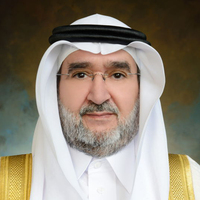After only six weeks in office, President Donald Trump has already sent shockwaves through the world regarding U.S. foreign and economic policy. The Council of Councils Initiative at CFR asked members to reflect on his March 4 address to Congress, and what his words and actions mean for U.S. engagement with their region.
Why Mexico Should Raise the Stakes
President Donald Trump’s recent address to Congress reaffirmed his earlier foreign policy positions, signaling a significant break from post–Cold War norms. In recent weeks, his administration has recast the United States as merely one among several great powers—albeit the most dominant—and less committed to upholding the existing international order. Instead, Washington has pursued transactional agreements with nations like China and Russia, sidelining Europe and treating regional partners as lesser players.
For Mexico, this shift is worrisome. A decades-long vision of North American economic integration now faces an outlook in which neighboring countries are treated more as vassals than partners. Trump’s frequent remarks expressing hopes for Canada to become the fifty-first 51st state mirrors the harsher tone directed at Mexico’s leadership—even as he professes personal respect for President Claudia Sheinbaum. This approach weakens cooperation and heightens uncertainty, forcing Mexico and Canada to respond to abrupt tariff threats and shifting demands. Meanwhile, the impact on U.S. financial markets signals that Americans themselves may soon feel the economic fallout more broadly.
Because Mexico’s economy is deeply intertwined with that of the United States, it has limited options beyond adapting to a climate in which concessions and tactical maneuvering override deeper collaboration. Those rapid changes provoke domestic concerns and cast doubt on Mexico’s capacity for steady growth, especially given signs it may already be in recession.
Still, the two nations share crucial interests. In matters of security, Mexico gains from dismantling organized crime networks and severing their links to government institutions, yet meaningful support from Washington is politically feasible only if Mexico avoids appearing to capitulate under pressure. Economically vibrant, interconnected markets bolster the United States’ supply-chain resilience in spite of trade deficits. Yet employing tariffs as leverage sows distrust and instability, ultimately harming all three North American economies. On immigration, a well-managed, fair system that meets labor needs across borders would serve everyone’s interests; however, contentious rhetoric frequently drowns out pragmatic policymaking.
In the end, Mexico’s most pragmatic course, however daunting, entails reaffirming its commitment to a North American partnership. By pressing the United States for deeper integration through a customs union, security cooperation, and a realistic immigration framework, Mexico can demonstrate that shared prosperity and stability provide the best defense against global challenges. Whether the United States accepts that premise remains an open question, but the case for genuine cooperation is stronger than ever.
Trump Through Delhi’s Lens
The broader Indian populace may have missed the nuances of President Donald Trump’s address on March 4 to the U.S. Congress, but his speech carried implications, both implicit and explicit, for India. First, the United States’ resolutely domestic orientation has impacted the world like never before. Second, the Trump administration’s unforgiving and at times incoherent policy choices since the inauguration have challenged allies, partners, and friends alike, forcing them to make adjustments of their own. At the forefront of this change are the administration’s trade policies in North America, specifically with its neighbors, Canada and Mexico, as well as a fundamental reversal on Ukraine. These radical swings in foreign policy serve as strong cautionary tales for countries that remain relatively unscathed by the Trump administration’s rapid policy salvos, such as India.
Unsurprisingly, India was mentioned twice in Trump’s address in reference to reducing tariff asymmetry, which is a key concern for Trump. India remains one of the few countries that has a large trade surplus with the United States, close to about $42 billion in 2024.
Broadly, the sentiment around India-U.S. relations in New Delhi remains hopeful, in part because of the personal chemistry between the leaders of the two countries, enhancing expectations for dealmaking. India remains cautiously optimistic about its relations with the United States under the second Trump administration despite the flux.
The February meeting between Indian Prime Minister Narendra Modi and Trump in Washington suggested there was a serious attempt in New Delhi to prepare grounds for a soft landing of the bilateral relations amid potential turbulence. The visit proved promising in several new areas such as tech and defense, even as the older structural framework continued to shape the bilateral engagement. The path to working out a bilateral trade agreement by fall 2025 will be keenly watched, given the focus on trade in Washington. India, for its part, has already signaled that it could be ready to take a conciliatory path to trade negotiations with one of its most important strategic partners.
Amid a policy of hard bargaining from the Trump administration across the board, economic coercion as a strategy to end the Ukraine-Russia war could have its own limits, especially when sovereignty, revisionism, and state power are so intertwined. Trump’s forceful diplomacy could secure a temporary ceasefire. But for a lasting peace, a New Delhi-Washington dialogue could carve a unique bridge in a fractured world. The revisionism inherent in Trump’s approach to the world could work for India in some areas. But in other areas, New Delhi is hoping that a serious engagement will deliver serious outcomes.
Proximity to the White House: Guaging Trade Vulnerability in Latin America
President Donald Trump’s March 4 speech to the joint session of Congress, as well as his second administration’s foreign policy in general, has been perceived in different ways throughout Latin America.
Countries closer to the United States have few options when assessing the impact of Trump’s policies. For instance, an increase of U.S. tariffs will hurt the Mexican economy, as more than 80 percent of its exports go to its northern partner. Mexican President Claudia Scheinbaum will have to make major concessions in trade and migration to avoid or lessen these levies. Colombia and other countries in Central America face a similar situation. Not only are those countries vulnerable to the trade sanctions imposed by the White House, but they are also considered a national security priority to the second Trump administration due to drug trafficking and illegal immigration linked to the region.
The situation at the Southern Cone is different. Although Washington is concerned about China’s presence in countries such as Argentina, Brazil, and Chile, those nations are not U.S. national security concerns. Moreover, they are less vulnerable to trade sanctions; their main trade partners are in their own region or in Asia, so they have more flexibility.
How the Latin America countries ultimately react to Trump’s pronouncements to Congress will vary depending on geography. While the first group of countries will make necessary concessions, those located in the Southern Cone may continue to move toward Asia—a structural change that has been taking place for at least two decades.
To stop this trend, Washington needs to develop a strategy that provides incentives to U.S. companies to increase trade and invest more in the region. Even President Javier Milei of Argentina, one of Trump’s closes allies in the region, is asking for some kind of free trade agreement to be signed between the two countries. Without concrete benefits, strengthening and justifying closer relations with the United States will become increasingly difficult.
America First and the World: Avoiding Back to the Future
“When America sneezes, the rest of the world catches cold” has been a popular expression for almost a hundred years, originating in the stock market crash of 1929. Today, it is an understatement to say that there is a sneezing epidemic in Washington. In his first address to a joint session of Congress since reelection, President Donald Trump outlined a grand, and often acerbic, vision for America First that should reverberate worldwide.
While there was not much new per se, this speech confirmed that the Trump administration is revisiting many crucial international issues in order to make them fully align with U.S. objectives to boost investment, economic prosperity, and national security at home.
Consequences of America First policies for the rest of the world are fast and furious. Uncertainty and incoherence are the hallmark of the Trump administration, including destructive on-again, off-again tariffs; questioning common security interests; and walking away from environmental commitments.
We have seen this movie before. The short-lived U.S. Tariff Act of 1930 resulted in higher inflation and helped fuel a global economic depression. Repeating hardcore protectionism today risks turning U.S. allies and friends into adversaries, to the benefit of China and Russia. Proposed tariffs and potential monetary policy shifts will harm U.S. ambitions by raising inflation for Americans, putting upward pressure on the U.S. dollar, and limiting domestic access to important economic inputs like critical minerals.
Canada is in a particularly vulnerable position given its economic and security dependency on the United States, yet Trump’s bullying tactics have resulted in a patriotic surge and could severely damage relations to the detriment of both countries. Though many Americans believe that they can live in glorious isolation, this is most blatantly untrue within North America where some common security, economic, and environmental interests are linked by geography. If cornered, nationalism will explode in both Canada and Mexico, with spillover across the continent.
It is understandable that the United States wants to put an end to any free riding. But it is paramount that policies avoid the mutual pain and risks of going back to the failed protectionist models of the 1930s. The United States should negotiate new security and prosperity partnerships with allies rather than drop them. For example, recasting the United States-Mexico-Canada Agreement (USMCA) as a broader agreement offers a way to update the partnership and avoid nasty trade wars and a serious rupture in relations.
A Two-State Solution Needed for Wider Regional Buy-In
President Donald Trump’s recent address to Congress carried implications for the Middle East and the Gulf region. In his speech, he reaffirmed his commitment to “creating a more peaceful and prosperous future for the entire region.” However, as far as Saudi Arabia and the Arab world are concerned, achieving that vision is only possible through a firm and unequivocal commitment to the two-state solution to the Israeli-Palestinian conflict, which the United States needs to fully endorse.
Despite acknowledging the need for a resolution, President Trump stopped short of making a decisive U.S. commitment to ensuring its implementation. As made clear at the Arab League summit held in early March 2025, the Arab states view the two-state solution as the only viable path to lasting stability. Any deviation from this framework not only risks prolonging the conflict, it undermines regional peace efforts as a whole.
Saudi Arabia has repeatedly emphasized that implementing the International Court of Justice’s rulings on the Gaza crisis is essential to upholding international law and preserving the global rules-based order. Any two-state solution needs to be grounded in international legitimacy.
While President Trump affirmed the right of Greenland’s people to “determine” their own future, he has failed to extend the same principle to the Palestinians. Beyond the Palestinian issue, Trump’s broader Middle East policy continues to focus on economic agreements and security cooperation. While he cited the Abraham Accords as a diplomatic achievement of his first term, its long-term success hinges on broader regional participation. Without wider buy-in from key states, the accords risk becoming a partial solution rather than a transformative framework for peace.
Trump’s Notable Signals on China
President Donald Trump’s wide-ranging address to a joint session of Congress was a rallying cry to his MAGA supporters and the latest jolt to his critics at home and abroad. It is not surprising that, like the leaders of most major powers, Trump is intent on making the United States even more rich and powerful. What is surprising, especially after the first Trump administration, is that the world is still not used to such brash talk and intimidation from an American president.
Trump looks at Asia through the lens of China, as a strategic competitor and major threat to U.S. interests. His latest round of tariffs on China kicked in the day before the congressional address. Unexpectedly, China retaliated immediately with its own tariffs. The Chinese tariffs mainly applied to agricultural commodities and were less than proportional to the tariffs imposed by the United States, which covered all Chinese goods.
China will not back down, but with this calibrated response and further negotiations, Beijing hopes to avoid a larger trade war. Trump’s speech could also provide some comfort, for while China was named among the Asian countries along with India and South Korea that run significant trade surpluses with the United States, Trump reserved his sharpest barbs for Canada and Mexico.
He also targeted the two North American neighbors for fentanyl distribution but was silent on China’s role as the source. He even teased the possibility of getting rid of President Joe Biden’s CHIPS Act. While reminding the audience to mark April 2 as the date when the United States’ reciprocal tariffs are expected to kick in, Trump appears to have left the door open for a swift response from China.
Most Asian countries, including many from the Association of Southeast Asian Nations (ASEAN), do not view Trump with the same trepidation as Europe. Apart from China and possibly North Korea, Asian countries did not incur harsh treatment from the first Trump administration, and they were not targeted in his presidential address. Nonetheless, ASEAN member states are bracing for the worst and worry about the impact Trump’s tariffs and other measures will have on Chinese investments in their respective countries. For many Asians, the main question is how to engage Trump in a way that ensures the United States’ continued presence as the top investor in the region, and a major source of new technologies, expertise, and military equipment.
The Opportunities and Risks of Trump’s Presidency
President Donald Trump’s joint address to Congress had remarkably little to say about Israel. Rather, the president used the speech to celebrate his actions and declare his intentions to radically transform U.S. foreign and domestic policy. In the vision he laid out for the country, the United States will step away from the global system it shaped over multiple decades and reduce its foreign aid—and therefore the influence that aid was meant to buy. In place of the status quo, Trump hopes to expand U.S. territory and direct pressure to further its interests. Although the speech touched on Israel and the Middle East only briefly, the policy commitments it represents matter greatly to the region.
In his address, President Trump named Israel as a source of inspiration for his “Golden Dome” missile defense initiative, and celebrated the release of “our hostages.” He stated his intent to expand the Abraham Accords to create a “more peaceful and prosperous” Middle East. While he did not mention Israel in the section of the speech dedicated to cuts to foreign aid, some regional actors are likely to suffer increased instability due to U.S. efforts to reduce its global commitments.
Trump’s comments to Congress encapsulate much of the administration’s attitude toward the Middle East, and its willingness to chart new paths in its strategy for the region. For example, to achieve the release of U.S. hostages in Gaza, it broke the taboo on direct negotiations with the terrorist organization Hamas. Similarly, the Trump administration has signaled that it may be open to a nuclear deal with Iran while openly threatening Tehran with military action, not necessarily by the United States, if it fails to comply.
The United States also looks to expand Israel’s normalization accords to include Saudi Arabia. However, this development is raised with little regard for the preferences of Palestinians in Gaza, which Trump has repeatedly said he would like to make a U.S. property.
Unlike the European allies who worry for the future of their relationship with Washington, U.S.-aligned regional actors like Israel and Saudi Arabia see immense potential in the Trump presidency. While this alignment carries opportunities, it also carries risks such as accelerating declining Democratic party support for Israel and costly global economic uncertainty. Moreover, Israelis cannot count on patience from Washington if Jerusalem comes to be perceived as an obstacle to Trump’s peace.
For Israel in particular—with developments on the Iranian nuclear front, a war that is not yet over in Gaza, hostages still in the hands of Hamas, and Israeli military presence in Lebanon and Syria—it is critical to maintain a close relationship with Trump and his appointees.
Trump’s China Policy Has Not Come Yet
Despite having only been in the Oval Office for six weeks, President Donald Trump has shocked the world—allies and adversaries alike. World leaders should have anticipated some of the shockwaves of the second Trump presidency, but many still felt unprepared and at sea. Hardly had international observers recovered from Trump’s dramatic meeting with Ukrainian President Volodymyr Zelensky at the White House when he delivered his first address to the joint session of the Congress last week, vilifying his predecessor, Joe Biden, and the Democrats in an astonishing way, and thus representing a deep split in U.S. politics in front of the world.
Except for self-promotional phrases and often unreliable and ambiguous numbers related to Social Security corruption and inefficiency of the bureaucracy, Trump focused on the MAGA agenda that helped him win the election. Among those priorities are illegal immigration, economic inflation, the federal budget deficit, and anti-wokeness—domestic issues meant to stoke Trump’s base.
Regarding foreign policy, Trump’s address sent a strong message to Congress on U.S. unilateralism, exceptionalism, and transactionalism. Trump was proud of withdrawing from what he termed the “unfair” Paris Agreement, the “corrupt” World Health Organization, and the “anti-American” UN Human Rights Council, further distancing the United States from levers of influence and the liberal international order. Trump has fundamentally changed the position of the United States on the Russia-Ukraine war and passed the buck to the Europe.
China was mentioned six times in the address, mostly in the context of trade, tariffs, and investment. Taiwan was mentioned only once, when the Taiwan Semiconductor Manufacturing Company was cited by Trump as an example of investment to the United States
Trump’s China policy can be regarded as cautious and moderate for now, especially considering the strategic competition between China and the United States in the past decade. However, this is only the beginning of the Trump administration, and his China policy has not fully unfolded. Both sides are crossing the river by feeling the stones, with a turbulent world as a background.
The Challenge of Stability
Profound changes in what were once stable relations among the Group of Seven (G7) nations have occurred since the second inauguration of President Donald Trump. Trump’s speech to Congress on March 4 provides an opportunity to reflect on the geopolitical and economic effects of those developments and the state of the world.
This is a challenging task, as there is no clear framework for modeling these shifts, particularly with the conflicting news people encounter almost daily. Therefore, it is essential to focus on facts: a) the United States is striving to cut expenditures; b) it is withdrawing from multilateral institutions and agreements; and c) stagflation remains a strong possibility. Cutting expenditures is vital for the United States to effectively control inflation and foster growth while preserving the U.S. dollar’s role as the international reserve currency. However, the period between budget cuts and economic recovery typically entails a recession, and a recession would likely be made worse by a tariff war. Such an economic downturn in the United States could indirectly affect Brazil, primarily through its impact on key partners such as China and Europe.
Rather than reverting to Cold War–style segmentation, a fragmentation of markets across various industries worldwide is likely. This could slow the pace of innovation, potentially altering the relative prices of natural resources and technological progress. However, because neither innovation nor natural resources are homogeneous goods, the outcome remains uncertain.
On the eve of hosting the 2025 Conference of the Parties (COP30), Brazil remains engaged on climate issues. We will also continue to foster peaceful relations with other nations and uphold a policy of noninterference. However, if the current multilateral system becomes outdated, Brazil will need to reassess the fundamental assumptions that have guided its diplomacy for the past 120 years, such as its longstanding reliance on collective frameworks. A key priority is improving the quality of the budgetary process, and the shocks we anticipate could accelerate this effort. Brazil must persist on its long—perhaps overly long—path toward democratic evolution and economic stability.
Europe Disoriented as Trump Recalibrates U.S. Role
A month and a half after President Donald Trump’s inauguration, Europeans are beginning, albeit with difficulty, to take measure of his explosive statements. The executive orders signed in bursts, the new lines of U.S. foreign policy, and the president’s general style of communication have produced a series of powerful and targeted electric shocks. On this side of the Atlantic, the profound changes have generated disorientation, concerns, and questions.
President Trump’s March 4 address to Congress was no exception. It was awaited with interest internationally but then focused mostly on aspects of U.S. domestic policy. It was especially aimed at those who most supported Trump’s election in November, as if to reassure them that the crucial issues of the campaign (reviving the economy, controlling immigration, fighting bureaucracy, etc.) remain at the top of the administration’s political agenda.
Certainly, the inflamed tone of the speech and the skillful choreography of the event were striking. The event had a party atmosphere, and emotions were prioritized over facts. The invited guests were protagonists with touching stories—a boy with cancer, the widow of a police officer killed in a firefight, the family of a young woman who was raped and murdered—to show that Trump’s politics is close to people’s lives.
The speech indicated there is little room for the previous U.S. role in the world, whether related to the search for a just peace in Ukraine, maintaining strong relations with European allies, who he falsely accuses of spending more on Russian gas than Ukraine’s defense, or for a stabilization of the Israeli-Palestinian conflict. Additionally, Trump’s insistence on U.S. tariffs does not suggest a positive economic development, and they are promised to continue even if there is some discomfort at home.
Beggar Thy Neighbor and the World
President Donald Trump’s address to a joint session of Congress on March 4, occurring after his first six weeks in office, was light on foreign policy. Nevertheless, he reaffirmed his previous statements concerning territorial ambitions over Greenland and Panama. While he refrained from referring to Canada as the fifty-first state, he underscored the necessity of placing tariffs on Canada, China, and Mexico.
The most immediate impact of President Trump’s aggressive style of foreign policy is on the future of Ukraine. He and his officials are repeating Russian justifications for the conflict. The United States’ vote against a UN resolution referring to Russia as the aggressor could only be understood in light of Trump’s defense of Vladimir Putin during the now-infamous Oval Office meeting between Trump and Ukrainian President Volodymyr Zelenskyy. Although there has since been a U.S.-Ukraine agreement on a thirty-day cease-fire and an agreement with Ukraine on rare earth minerals could still be reached, the future of the deal is uncertain.
Also apparent in the speech was President Trump’s disdain for multilateral institutions. The United States is withdrawing from the World Health Organization and the UN Human Rights Council, and Washington will not even attend the Group of Twenty (G20) summit in South Africa.
For all of the disruption, President Trump has achieved some success. Panama has begun to distance itself from China, and Mexico has apprehended gang leaders and extradited them to the United States. Those actions did not, however, deter him from implementing tariffs. The Arab League has formulated a plan to rebuild Gaza in light of Trump’s suggestion to expel Palestinians from the land.
As China grew stronger, the United States realized that its main struggle would be in the Pacific rather than Europe. However, developments in Europe and the Middle East have kept Washington from focusing on China. A quick settlement to both those conflicts is in the best interests of the United States, which is why Trump focused on them. Much will depend on how Trump’s words are followed up. The world is becoming increasingly fragmented, and the West is divided into those who follow the laws and those who do not.
President Trump is commanding headlines as he disrupts longstanding U.S. foreign policy. The globe observes daily in astonishment, contemplating what will transpire next. His unpredictability remains a constant. The European Union is finally acknowledging that U.S. priorities have shifted. It is now up to Europe to unite behind a leader capable of facing these new challenges.
Trump Sees U.S. Allies as a Problem and Not a Solution
“America is back.” That was President Joe Biden’s message to allied leaders after he took office in January 2021. He wanted them to know that the United States would work with them to confront joint challenges. When Donald Trump opened his address to a joint session of Congress on March 4 with the same three words, his message to U.S. allies was the opposite: They are part of the problem facing the United States and not part of the solution.
Trump’s oft-stated belief that U.S. allies have exploited the United States permeated his joint address. He denounced a “very unfair” global trading system in which “the European Union, China, Brazil, India, Mexico and Canada…and countless other nations charge us tremendously higher tariffs than we charge them.” Having already imposed substantial tariffs on Canada and Mexico, America’s neighbors and two largest trading partners, he vowed to impose “reciprocal” tariffs on countries around the globe starting next month, regardless of the alliance status of those countries and even if the tariffs will cause “a little disturbance” for Americans themselves.
Other passages in the speech gave U.S. allies additional reason for concern. He repeated his false claim that the United States has spent more than three times as much supporting Ukraine as Europe has. He reiterated the demand he made in his inaugural address for U.S. control of the Panama Canal and insisted that “one way or another, we’re going to get” Greenland. He boasted of his decisions to withdraw the United States from “the unfair Paris climate accord,” “the corrupt World Health Organization,” and “the anti-American U.N. Human Rights Council.”
Just as notable as what Trump said was what he did not say. He did not say what concessions Russia would need to make to secure a peace in Ukraine, or why Ukraine could expect any peace deal to hold. He said nothing about whether China threatened the security of the United States—or its allies—or what he planned to do if it does. Iran and North Korea went totally unmentioned.
U.S. allies now need to decide how to respond to a president who sees them as unfair competitors and not as valued partners. No matter how much the United States accomplished with its allies in the eighty years since the end of World War II, Trump plans a much different path forward for U.S. foreign policy.
Echoes of Imperialism
Global audiences are well attuned to the typical us-versus-them tone of President Trump’s speeches that he uses to attack his political opponents at home and abroad. This tactic was on full display in Trump’s speech to Congress on March 4, as was the sight of a house very clearly divided by Trump’s polarising effect on U.S. politics.
Even more striking was the extent to which this was a domestic speech, one that only briefly—albeit dramatically—touched on foreign affairs. Ukraine, tariffs, and Greenland are all common themes for Trump and little new was said. However, the aggregate effect of how they were discussed is remarkable.
The second Trump administration’s imperatives of ending the fighting in Ukraine (with few consequences for Russia) and absorbing Greenland have global consequences. There is scarcely any part of the planet that has remained untouched by past imperial conquests. For Trump to now reawaken the United States’ old imperial character is one of the most globally notable facets of his second presidency so far.
Indeed, in his speech, Trump mentioned almost in passing the “great president, William McKinley,” who was in office at the height of the United States’ formative imperial experiences, including the Spanish-American War of 1898. The point here is not about Trump emulating McKinley by going to war for land, but of a United States that has a newfound comfort level with changing territorial borders in ways that favour the strong over the weak.
It remains to be seen just how openly Trump’s vision for the country re-embraces this mentality. As his March 4 speech reinforced, Trump is hardly making the country exclusively isolationist; instead, he appears also to be making it more imperial in its foreign policy, including by demanding much more direct income from the countries abroad (such as Ukraine) that the United States chooses to protect.
The world watches with anticipation as to just how these trends will intensify, and how they will affect the future global order.
Trump’s Speech to Congress: Chilling Implications for Southeast Asia
As expected, President Trump’s speech to Congress reiterated his protectionist tendencies and his disdain for the green transition. While his second administration’s policies are primarily aimed at strengthening the U.S. economy, the effects extend globally, particularly to the regions heavily integrated into the global economy, such as Southeast Asia (SEA).
Reciprocal tariffs were a central theme of Trump’s speech. These tariffs would threaten SEA’s economy, as it relies heavily on trade, including exports to the United States. In 2024, more than 25 percent of Vietnam’s exports went to the United States, while nations in the Association of Southeast Asian Nations (ASEAN) recorded a total $227 billion surplus from trade with the United States.
Tariffs would not only affect trade in the region, but also investment activities, particularly in export-driven economies. Multinational companies that had previously expanded their operations in the region could reconsider their investments due to the shifting trade environment. Trump’s emphasis on reshoring manufacturing to the United States could pressure companies to relocate even from Southeast Asia.
On the other hand, a tariff war could encourage Southeast Asian economies to deepen their intra-ASEAN trade and strengthen ties with other major markets. Some Southeast Asian countries can also take this opportunity to attract investment and create new regional supply chains, particularly in the emerging green industries. Regional economic initiatives that exclude the United States, such as the Comprehensive and Progressive Agreement for Trans-Pacific Partnership and the Regional Comprehensive Economic Partnership, could facilitate deeper economic integration and attract investment from companies seeking to navigate shifting trade policies.
Trump’s plan to expand U.S. fossil fuel production could have significant implications for SEA nations, some of which received support from the United States under the Just Energy Transition Partnership. This move could encourage SEA countries to reassess their renewable energy commitments, especially if they perceive a lack of international support or shifting global priorities. Indonesian officials have already questioned the necessity of promoting an energy transition if the United States will no longer participate.
Trump’s plan to reclaim control over the Panama Canal and to incorporate Greenland could also have regional implications for Southeast Asia. Increased U.S. control in Panama could impact shipping costs and trade flows. If Washington imposes access restrictions to the canal, SEA exporters could face increased costs and logistical challenges.
Furthermore, Trump’s foreign policy rhetoric could set an example for China to adopt similar assertive actions. China could be triggered to strengthen its military presence in disputed areas like the South China Sea, or around the Mekong region. If U.S.-China tensions escalate, SEA countries could find themselves caught between competing spheres of influence, making their efforts to maintain strategic neutrality and regional stability more difficult.
This work represents the views and opinions solely of the authors. The Council on Foreign Relations is an independent, nonpartisan membership organization, think tank, and publisher, and takes no institutional positions on matters of policy.





















